
8 min lesen
September 18, 2023
In today’s digital era, software is integral to our daily lives. From mobile apps that simplify our routines to complex systems that drive businesses – software influences almost every aspect of our existence. But how is software created? What steps are necessary to turn an idea into a functioning product? This is where the Software Development Life Cycle (SDLC) comes into play, a software lifecycle model that defines the entire software creation and maintenance process.
The Software Development Life Cycle, often simply called SDLC, is a structured process describing the various phases of software development from conception to maintenance. SDLC provides a systematic approach to software creation, ensuring that the final products are high quality, error-free, and meet user requirements. It is an iterative process with multiple phases, each with specific goals and activities. SDLC helps developers and project managers monitor progress, minimise risks, and ensure the project stays within the specified time and budget constraints.
The Software Development Life Cycle (SDLC) is a structured process that describes the entire journey from idea generation to implementation and maintenance of software. It is a simple, understandable guide for developers and project managers to ensure that software products are efficiently developed, tested, and deployed. SDLC consists of multiple phases, each with specific goals and activities.
Before the actual development process begins, it is crucial to identify the challenges and problems the new software solution aims to address. This can be done through stakeholder discussions, customer feedback, or market analysis. Understanding the core problems ensures that the software solution meets the actual needs of users.
In the planning phase, the goals and requirements of the software project are defined. Resources are allocated, schedules are created, and potential risks are assessed. Planning is crucial to efficiently structuring the entire development process and ensuring that the final product meets expectations. The project’s framework conditions, such as budget, team composition, and technical requirements, are also established.
Based on the identified problems and project goals, the specific requirements of the software are defined. This can take the form of functional and non-functional requirements. This phase ensures that all parties involved clearly understand what the software should achieve and what functions and features it must have.
Once the requirements are clearly defined, the design phase begins. Here, the concept of the software is transformed into a detailed design that includes both the user interface and the technical architecture. A prototype can be created to provide a preview of the final application and to gather feedback from stakeholders.
In this phase, the actual code of the software is written. Development teams use various programming languages and tools to implement the requirements and designs defined in the previous phases. It is essential that the team works closely together and regularly communicates about progress. A software lifecycle analysis is also crucial in this phase to ensure that the software meets the specified requirements.
Before the software is deployed, it must be thoroughly tested. This ensures that all functions work as expected and that there are no errors or security vulnerabilities. Various testing methods, such as unit testing, integration testing, or acceptance testing, are used to guarantee the quality of the software.
After successful testing, the software is made available to end users. This can be done through physical media, download links, or cloud platforms. Ensuring the software runs smoothly in the target environment is essential.
After deployment, the software continues to be monitored and maintained. This includes fixing bugs, adding new features, or adapting the software to changing requirements. Continuous support and regular updates ensure the software remains efficient and secure throughout its entire lifecycle. This process is also known as the end-of-software-lifecycle solution, as it ensures that the software continues to function effectively even at the end of its lifecycle.
There are various approaches and methodologies to structure the Software Development Life Cycle (SDLC) in software development. Each SDLC phase has its advantages, disadvantages, and application areas. The choice of the correct methodology depends on the specific requirements of the project, the team’s goals, and the company’s preferences.
The Software Development Life Cycle (SDLC) provides a structured approach to software project development. This approach brings numerous valuable benefits for both development teams and businesses.
To optimise the Software Development Life Cycle (SDLC) and ensure the quality of the final product, certain best practices should be followed. These proven methods help improve development, minimise risks, and enhance team collaboration.
1.Source Code Management
2. Continuous Integration
3. SDLC Management System
The Software Development Life Cycle (SDLC) is a comprehensive framework with various phases and processes to develop and deliver high-quality software. However, beyond the main phases of the SDLC, other important processes should be considered throughout a software’s lifecycle:
1. Documentation
2. Quality Assurance
3. Risk Management
4. Training and Support
The Software Development Life Cycle (SDLC) is an indispensable framework in the field of software development. It provides a systematic approach to developing and delivering high-quality software products. A software lifecycle example would be creating a mobile app from ideation to deployment and maintenance. The SDLC gives developers, project managers, and all other stakeholders a clear overview of the software asset lifecycle, covering everything from ideation to maintenance. Adhering to this lifecycle and integrating best practices ensures that software projects are completed efficiently, risks are minimised, and the final products meet user expectations.
The SDLC serves as a structured process for software development, from ideation to maintenance. It ensures that software products are developed to be high-quality, error-free, and aligned with user requirements.
The planning phase lays the foundation for the entire project. Here, goals are set, resources are allocated, and potential risks are assessed. Thorough planning ensures that the project runs efficiently and meets expectations.
Yes, the SDLC is flexible and can be adapted to different software projects, from small applications to large enterprise systems. A specific SDLC methodology (e.g., Agile, Waterfall) may be more suitable depending on project requirements.

October 8, 2025
The biomethane sector is entering a decisive phase. Driven by climate targets, stricter regulations, and rising demand for renewable energy, the market is experiencing rapid growth. Yet, this expansion also creates new op...

February 3, 2025
The future of ERP lies in more efficient and flexible business solutions. In this article, you will discover how .NET-based ERP systems help you optimize processes while remaining adaptable. Explore the key benefits and technological advancemen...